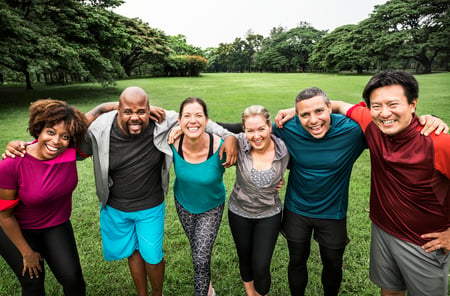Limitations of A1C: How Does A1C Vary by Race and Ethnicity?
By April HopcroftMatthew GarzaJulia Kenney
 Healthcare professionals and people with diabetes often rely on A1C as a metric for diabetes management, but A1C values can also differ based on genetics. Black people tend to have a higher A1C compared to other racial groups.
Healthcare professionals and people with diabetes often rely on A1C as a metric for diabetes management, but A1C values can also differ based on genetics. Black people tend to have a higher A1C compared to other racial groups.
Many factors can influence A1C, including a person’s race, ethnicity, and type of hemoglobin (the main protein found in red blood cells). That’s why some Black people tend to have a higher A1C compared to white people, even though both groups have the same average glucose levels.
While A1C is an important measurement, studies have shown that A1C values are less accurate for people of African, Mediterranean, or Southeast Asian descent. Thus, while
A1C is a valuable tool for standardized, long-term diabetes care, other metrics used to assess diabetes health, like time in range, may be beneficial.
What is A1C and why is it important?
A1C is a standard blood test that measures the average blood sugar level over the previous two to three months. The A1C test reports on the percentage of hemoglobin (a protein found in red blood cells) that is coated with sugar. The higher the A1C the higher the average blood sugar level.
Since A1C is commonly used to guide decisions in order to safely manage diabetes, it is important that the test is accurate. However, studies have shown that A1C percentages in some people of African, Southeast Asian, and Mediterranean descent, are falsely high (or sometimes even falsely low). This discrepancy is due to a genetic variation that doesn’t increase their risk for diabetes but does affect the results of their A1C test. And this can be a problem.
A1C values are also influenced by the survival rates of red blood cells, which can differ based on genetics, infections, and certain medications. In addition, hemoglobin comes in different forms based on ancestry. That’s yet another reason why A1C results may vary between Black people and white people, for example.
Along with blood sugar levels, A1C can also be used to assess a person’s risk of diabetes-related complications including heart disease, kidney disease, vision loss, and nerve damage. Studies have demonstrated that lowering A1C significantly reduces the risk of these complications. A1C can also help determine if someone has prediabetes.
What does A1C look like for different racial groups?
A person without diabetes has an A1C below 5.7%. People with prediabetes, who are at higher risk for developing type 2 diabetes, have an A1C between 5.7-6.4%.
Though A1C has proven to help diagnose diabetes, this measure alone is not sufficient to guide treatment decisions. Standardized A1C values for prediabetes and diabetes are based on data derived from a trial that primarily enrolled white people and does not account for racial and ethnic variations in A1C. As a result, A1C standards may be biased toward white individuals.
In an analysis of nearly 1,800 people with diabetes who used continuous glucose monitoring (CGM), the average A1C was 0.33% higher among Black patients compared to white patients. (A1C for Asians, Latinos, and patients from multiple ethnic backgrounds did not differ significantly from those of white patients.) Another comparative study of Black and white participants reached a similar conclusion, finding A1C values were 0.4% higher among Black participants with type 1 diabetes compared to white participants with type 1.
Importantly, the higher A1C levels among Black people have not been shown to increase the risk for diabetes-related complications. A 2019 study suggests that the variation in A1C could be attributed to biological differences in red blood cell survival and how glucose actually attaches to red blood cells, rather than differences in glucose management.
A1C measurements are not perfect. While effort has gone into perfecting A1C accuracy, the margin of error is still around 0.4%. This means a person with an A1C of 6.8% could have an actual A1C ranging from 6.4-7.2%.
How can we more accurately measure diabetes for everyone?
Recently, the diabetes community has emphasized the importance of an additional measurement of diabetes management: time in range.
Time in range is the percentage of time someone spends in their target glucose range. The target time in range should be individualized, but guidelines recommend that people stay between 70-180 mg/dL 70% of the time.
Compared to A1C, which provides one average value over several months, time in range provides information that allows people with diabetes to see patterns of glucose variability throughout the day. Time in range has been shown to be a valuable and person-specific tool to assess diabetes health and is applicable to people of all racial groups.
Time in range is most commonly calculated through CGM data, which provides real-time, constant glucose measurements. Hopefully, as more people are able to access and effectively use CGM, time in range will become a top tool for supporting diabetes management.
We know that the day-to-day and long-term experiences of diabetes can vary widely from person to person. We encourage you to talk to your healthcare team about whether measuring time in range could be helpful for you.
This article is part of a series on time in range. The diaTribe Foundation, in concert with the Time in Range Coalition, is committed to helping people with diabetes and their caregivers understand time in range to maximize patients' health.
Learn more about diabetes and A1C:
Additional reporting by Marie Tetsu









